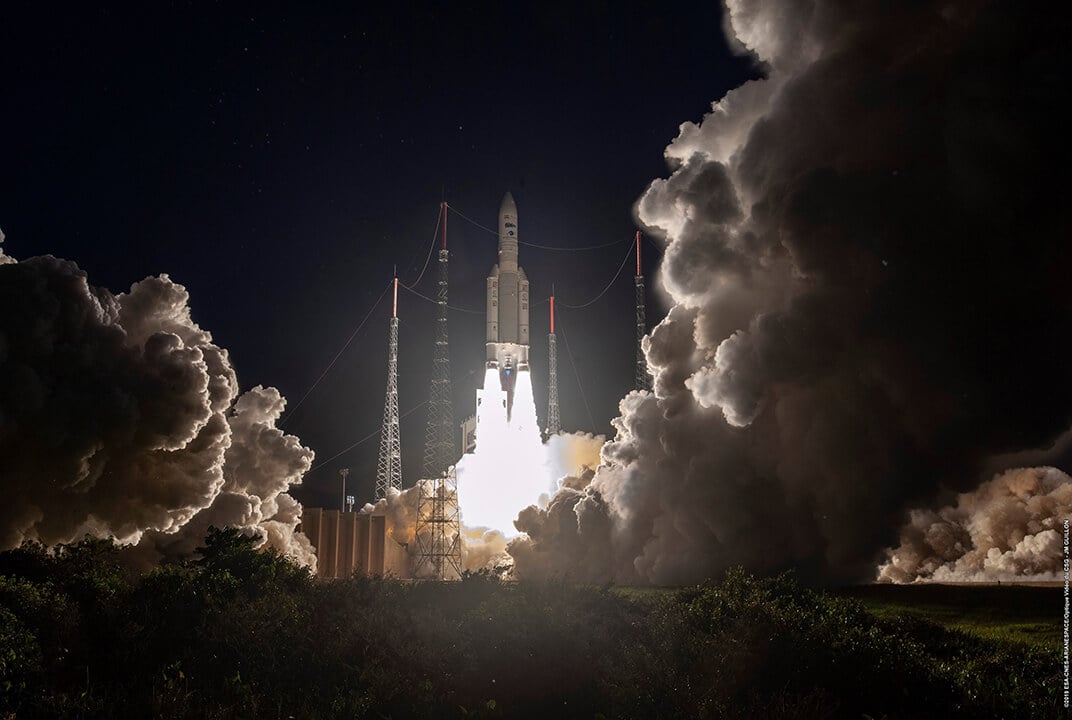Insight | Global Xpress: designed as an enabler for all
Global Xpress: designed as an enabler for all
Corporate
Rupert Pearce describes the essential role Inmarsat’s GX network plays in opening up access to the emerging global digital society.
The successful launch of the fourth satellite in our Inmarsat-5 constellation this week means we can truly say that the age of Global Xpress has arrived.
When we first announced our vision of a revolutionary, high capacity, global broadband network seven years ago, many considered it a shot in the dark. At the time, satellite communications was considered to be something of a niche industry operating at the periphery of the mainstream, terrestrial telecommunications sector.
But today we are living in a very different world, one in which satellite communications have become an essential enabler of the emerging global digital society. Satellite connectivity offers unique, mission-critical capabilities – reliability, resilience and, above all, the power to deliver pervasive coverage to isolated communities on land, at sea and in the air.
Opening up opportunities
I am very proud of the role that Inmarsat and our partner ecosystem have played in fashioning this dynamic and exciting age of connectivity. We are focused entirely on the needs of our users, whoever they are and wherever they happen to be. We are opening up many new opportunities for governments, businesses and people throughout the world to deploy our services to solve existing problems and create exciting new projects – from the connected car right through to the smart city.
Since our ground-breaking Global Xpress network began to deliver seamless worldwide service at the end of 2015, it has emerged as the new standard of excellence for mobile broadband communications – not just in established VSAT markets, but also in new areas, such as the rapidly expanding aviation passenger connectivity sector.
With I-5 F4, we are adding additional capacity to the network as well as in-orbit redundancy that further upgrades the reliability and resilience of our services. This kind of augmentation will be a consistent feature in the years to come, as we maintain GX at the cutting edge of innovation.
For example, we are investing in air interface and ground segment enhancements that will drive speeds on the GX network from 50 Mbps to up to around 300 Mbps. And there will be additional capabilities on the I-6 generation spacecraft that are currently being constructed and will launch in the early 2020s.
Back when we imagined this new Ka-band network, our goal was not simply to build a larger connectivity pipe, but to create a new platform and a new ecosystem that would enable any and all communities to benefit from the emerging digital society. As we work to deliver our new I-5 satellite to its final location in geostationary orbit, this remains our absolute focus.
About the author
Rupert Pearce was Inmarsat’s Chief Executive Officer from January 2012 until February 2021. Rupert joined Inmarsat in January 2005 as Group General Counsel and, from January 2009, additionally held the position of Senior Vice President, Inmarsat Enterprises. Previously, Rupert worked for Atlas Venture, where he was a partner working with the firm’s European and US investment teams. He was previously also a partner at the international law firm Linklaters, where he spent 13 years specialising in corporate finance, M&A and private equity transactions. Rupert received an MA (First Class) in Modern History from Oxford University and won the 1995 Fullbright Fellowship in US securities law, studying at the Georgetown Law Center. He has been a visiting fellow of the Imperial College Business School, London, lecturing on the school’s Entrepreneurship programme, and is the co-author of Raising Venture Capital (Wiley).


